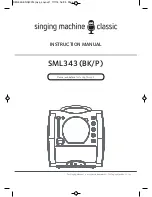
Crestron
Surround Sound
Primer
Standing Waves
A standing wave is a low frequency distortion that happens when a
particular frequency
has a unique relationship to the size or shape of a
room, resulting in a increasingly
resonating sound. The original signal
is amplified to a loud, booming bass that overpowers
all of the other
frequencies. This wave phenomenon results from the interference
of
sound waves of the same frequency and kind traveling in opposite
directions.
For example, if a string is stretched between two supports
and a wave sent down its
length, the wave is reflected and sent back in
the opposite direction, resulting
in a standing wave. Standing waves
can be also seen in columns, tubes, plates, rods
and diaphragms that are
the component parts of musical instruments.
Standing waves occur in rooms by low frequency sounds with long
wavelengths. The
reflected sound wave is nearly in perfect phase with
the original wave and creates
a fixed spatial pattern of nodes and
antinodes. The nodes are experienced as dead
spots, points of nearly
complete cancellation. The antinodes reinforce and amplify
the original
sound, creating the booming bass sound.
Standing waves can be
reduced or eliminated by careful placement of subwoofers, rearranging
furniture, and equalization adjustment.
Phase
Phase is a specific point in a sound wave, measured from a zero point
and given as an angle. Many powered subwoofers feature a phase
switch allowing a change of phase from 0 degrees to 180 degrees (180
degrees is exactly one half of a complete cycle). When two audio
signals are out of phase, they cancel each other out resulting in a weak
signal (or no signal at all if they are 180 degrees out of phase). This
occurs when one sound wave is at its peak while the other is at its
bottom point, the trough. Similar to adding a negative one to a positive
one, the end result is zero. By switching the phase, the sound waves are
aligned and reinforce one another instead of canceling each other out.
When connecting speakers, ensure that the phase (+ and -) connections
are correct and consistent. Many powered subwoofers feature a phase
switch, allowing the user to change the phase from 0 degrees to 180
degrees. By switching the phase, sound waves from the subwoofer can
be aligned with other sound waves to reinforce one another instead of
canceling each other out.
Phase Shift
Primer – DOC. 6122
Surround Sound
•
17
















































